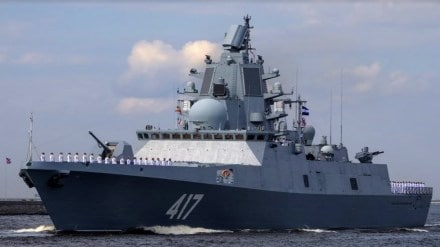Russia sending its fleet including nuclear powered submarine has achieved desired results as far as it has been able to create panic in US media as well as the population at large. The Russian fleet docked at Havana port is around 350 kms from the popular Miami Beach (Florida). So much so that US Southern Command has to rush its submarine USS Helena to Guantanamo Bay in Cuba to inspire confidence in the US public.
Here is what a War Correspondent Thinks:
Sharing his views with FinancialExpress.com, Neeraj Rajput a senior war correspondent says: “This is actually a tit for tat by Russian President Vladimir Putin against the US which has been waging war on Russian borders for more than two years.”
According to Rajput who has covered the Russia-Ukraine war, “the major development took place when US President Joe Biden was in Italy to attend the strategically important G7 Summit where Prime Minister Narendra Modi is also attending. Also, US Secretary of Defence Lloyd Austin was visiting Brussels for NATO Defence Ministers meet. Both G7 and NATO meets are primarily aimed against Russia.”
FinancialExpress.com has reported previously the focus of the G7 Summit was climate change, Africa and Artificial Intelligence and the Middle East. However, “the moment Ukraine President Zelensky attended the meeting, the agenda was hijacked by anti-Russian narratives. So, we saw G7 countries giving their approval for a US$ 50-billion loan for Ukraine which has been earmarked from the various Russian accounts and assets seized by western countries.”
And, at the summit, “Biden inked a security agreement with Zelensky which can guarantee training of Ukrainian troops for 10 long years besides supplying weapons and financial aid. The only leader perhaps in the whole G7 Summit who is not averse to Russia (Putin) is Modi. The Saudi Prince had already declined to visit Italy keeping in view its closeness to Russia though Hajj month has been given the alibi,” observed Rajput.
In his view the whole anti-Russian agenda at G7 took place when from the very next day on Saturday, Zelensky and a whole lot of European (NATO) countries were set to participate in the Swiss Peace Summit to bring cordial solution to the Russia-Ukraine dispute.
However, the Swiss summit would hardly bring any solution keeping in view Russia has declined to attend. China too has also declined. Even PM Modi would also not attend as he is returning from Italy on Friday evening.
Responding to media queries at the special briefing ahead of PM Modi’s visit to Italy, foreign secretary Vinay Kwatra said: “India will be participating at an appropriate level.”
Overview
A recent move by Russia has drawn comparisons to the infamous Cuban Missile Crisis of 1962. Amid the ongoing Ukraine conflict, Russia has deployed a naval fleet to Cuba, raising questions about the potential for heightened tensions between Russia and the United States.
The Historical Context
In 1962, during the Cold War, the United States and the Soviet Union (now Russia) came dangerously close to nuclear war. This confrontation, known as the Cuban Missile Crisis, was sparked by the US.’s failed attempt to overthrow Fidel Castro’s government in Cuba. In response, the Soviet Union prepared to deploy nuclear missiles in Cuba, prompting the US to blockade the island with its warships. The crisis was ultimately resolved through diplomatic negotiations, but it remains one of the closest instances of near-nuclear conflict between two superpowers.
Recent Developments
The current situation echoes the past. According to the Russian Defence Ministry, warships and submarines from Russia’s Northern Fleet are heading to the Caribbean Sea from June 12-17 for a mission to “show the flag” and undertake operations in distant waters. The fleet includes the missile frigate Admiral Gorshkov, equipped with cruise missiles, and the Yasen-class submarine Kazan, a nuclear-powered vessel. Alongside these, a replacement tanker and a tug-boat are also part of the fleet.
The Cuban Defence Ministry has stated that the Russian fleet does not carry nuclear weapons. Nonetheless, the presence of these vessels so close to American shores has not gone unnoticed.
US Response
John Kirby, a spokesman for the U.S. White House, has downplayed the immediate threat, stating that while there is no current threat from the Russian fleet, the situation will be closely monitored. Despite the lack of immediate danger, the deployment marks the first time in decades that a Russian nuclear submarine has ventured so close to American territory.
Strategic Implications
This deployment is part of a broader strategy by Russian President Vladimir Putin. In response to U.S. support for Ukraine, particularly the provision of long-range weapons, Putin has suggested that Russia may supply nuclear weapons to its allies. This is evident in Russia’s recent non-strategic nuclear exercise with Belarus.
The timing of Russia’s naval movement is also significant. Ukraine has been using U.S.-supplied long-range weapons, such as ATACMS missiles, to target Crimea and interior regions of Russia. For instance, Ukraine recently claimed to have destroyed a Russian Su-57 stealth fighter jet stationed at an airbase in Astrakhan, about 600 km from the Ukrainian border.
US Weapons Policy
US President Joe Biden has authorized the use of American-supplied weapons in Ukraine but with restrictions. These weapons are to be used strictly for self-defence and only within Russian border areas adjacent to Ukraine.
Broader Geopolitical Shifts
In the midst of these developments, China is also expanding its influence. Beijing is constructing a deep-water port in Chancay, Peru, which is expected to be inaugurated by Chinese President Xi Jinping later this year. This move could further complicate China’s already strained relationship with the US.
The deployment of Russian naval forces to Cuba, while not immediately threatening, serves as a stark reminder of the delicate balance of power and the potential for renewed tensions reminiscent of the Cold War era. As global powers navigate these complex dynamics, the world watches closely, hoping to avoid another crisis on the scale of the Cuban Missile Crisis.
